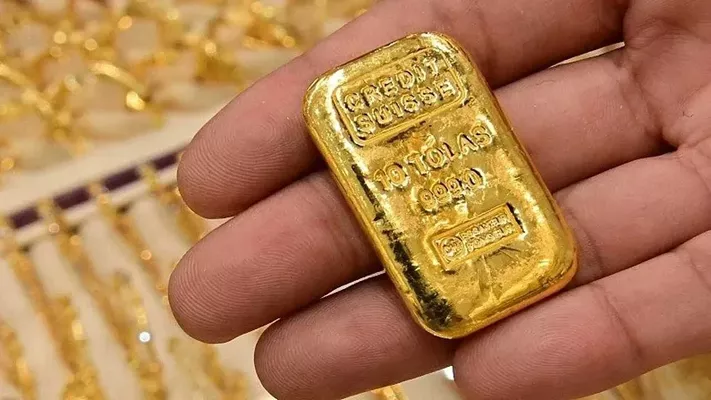Gold has always played a significant role in India’s economy, culture, and investment markets. It is not just a metal but a symbol of wealth, status, and security. Over the years, gold prices in India have fluctuated due to several factors, including global economic conditions, inflation, demand-supply dynamics, and government policies. In this article, we will explore the history of gold prices in India, major influencing factors, and the trends observed over the decades.
Early History of Gold in India
Gold has been a part of India’s history for thousands of years. Ancient Indian civilizations, such as the Indus Valley Civilization, used gold for trade and ornamentation. Indian rulers and dynasties hoarded vast amounts of gold, and temples were often adorned with gold structures and jewelry.
During the British colonial era, India was one of the world’s largest buyers of gold. The British introduced regulations on gold imports, affecting local gold prices. However, gold remained a preferred form of wealth preservation among Indians.
Gold Price Trends in India Over the Decades
Gold Prices Before 1960
Before 1960, gold prices in India were relatively stable. Gold was not actively traded, and most transactions took place in physical form. The price of gold was around ₹100 per 10 grams during the 1940s.
1960-1980: Gradual Increase
During the 1960s, India’s economy was growing, and inflation started affecting gold prices. By 1970, the price of gold rose to around ₹184 per 10 grams. The global oil crisis and the weakening of the Indian rupee contributed to the price rise. By 1980, gold prices had skyrocketed to ₹1,300 per 10 grams due to increasing demand and inflation.
1980-2000: Economic Reforms and Gold Price Volatility
The period from 1980 to 2000 saw multiple economic changes in India. The Indian government implemented various economic reforms, and gold prices saw sharp fluctuations. The liberalization of the Indian economy in 1991 had a significant impact on gold prices. In 1990, the price of gold was around ₹3,200 per 10 grams, and by 2000, it reached ₹4,400 per 10 grams.
2000-2010: Bull Market in Gold
The 2000s marked the beginning of a strong bull market in gold. Several factors, such as global economic crises, the weakening US dollar, and increasing demand for gold in India and China, pushed prices higher. By 2008, during the global financial crisis, gold prices surged. The price of gold increased from ₹4,400 per 10 grams in 2000 to ₹18,500 per 10 grams in 2010.
2010-2020: Record Highs
The period from 2010 to 2020 witnessed record-breaking gold prices in India. The demand for gold increased due to economic uncertainty, inflation, and a weak Indian rupee. By 2013, gold reached ₹31,000 per 10 grams, although it saw some corrections in subsequent years.
In 2020, the COVID-19 pandemic triggered a massive surge in gold prices. Investors saw gold as a safe-haven asset. By August 2020, gold hit an all-time high of ₹56,200 per 10 grams.
2021-Present: Continued Demand and Market Fluctuations
After 2020, gold prices remained high due to global inflation, geopolitical tensions, and central bank policies. In 2022, gold prices fluctuated between ₹46,000-₹55,000 per 10 grams. In 2023, gold prices remained stable but continued to show long-term growth potential.
Factors Affecting Gold Prices in India
Several factors influence gold prices in India. Understanding these factors can help investors make informed decisions.
1. Global Gold Prices
Gold prices in India are directly influenced by international gold rates. Any fluctuation in global gold prices impacts the domestic market.
2. Indian Rupee Value
Since gold is imported in India, the value of the Indian rupee against the US dollar affects gold prices. A weaker rupee leads to higher gold prices.
3. Inflation
Gold is considered a hedge against inflation. When inflation rises, investors turn to gold, pushing its price higher.
4. Demand and Supply
India is one of the largest consumers of gold. Festivals, weddings, and investment demand impact gold prices. Supply constraints also lead to price increases.
5. Government Policies and Import Duties
The Indian government imposes import duties and taxes on gold, affecting its price. Any changes in taxation policies can influence gold prices.
6. Interest Rates and Central Bank Policies
When interest rates are low, gold becomes a more attractive investment. Central bank policies also impact gold demand and prices.
Gold Investment in India
Gold is one of the most popular investment options in India. There are several ways to invest in gold:
1. Physical Gold
Many Indians prefer buying gold in the form of jewelry, coins, and bars. However, physical gold comes with storage and security concerns.
2. Gold Exchange-Traded Funds (ETFs)
Gold ETFs allow investors to invest in gold without physical storage. These are traded on stock exchanges and provide liquidity.
3. Sovereign Gold Bonds (SGBs)
The Indian government issues Sovereign Gold Bonds, which offer interest and are linked to gold prices. They are a great alternative to physical gold.
4. Digital Gold
Investors can buy digital gold through mobile apps and online platforms. This allows for small investments without handling physical gold.
Future Outlook of Gold Prices in India
Gold prices are expected to remain strong in the coming years due to rising inflation, geopolitical uncertainties, and increasing demand. Analysts predict that gold may continue to appreciate as an investment asset.
Conclusion
Gold has always been a crucial part of India’s financial and cultural landscape. The history of gold prices in India shows steady growth over time, influenced by economic factors and market trends. Understanding gold price trends and the factors affecting them can help investors make better decisions. Whether for investment or tradition, gold remains a valuable asset for Indians.
Related Topics:

